MusicMaster Blog
Linking Histories for Cloned Songs posted on July 1st, 2011
By Paul Ziino
Once set up, Alternate Categories within MusicMaster can offer a lot of options to music programmers. The basic concept is that in some dayparts you want a song to rotate in one category, but in other dayparts it should rotate in a different category. However you want MusicMaster to count plays in both categories for that song’s play history.
Step One: Cloning songs
In order to copy a song from A and add it to B, find the song in category A, right-click on it, then select Copy/Selected Song then select the category to copy it to (B).
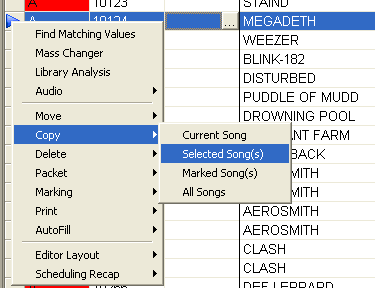 Step Two: Sharing History
Step Two: Sharing History
You’ll need a Keyword Single field in which to place a unique identifier for the song—typically its automation number. If your data is lacking an unused Keyword Single field, contact your MusicMaster Scheduling Consultant and ask them to add one for you. You can label this field as “History Link”. Make sure to note the field ID assigned to the History Link field in Dataset/Library/Fields.
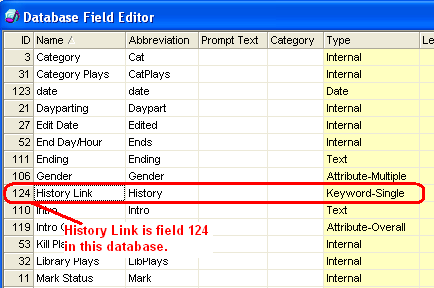
Now go to Tools/Options/Additional Properties. Under the History Header, indicate the History Link field ID in the Primary Rest Field, and set Primary Rest Rules to 1. This tells MM to use the History Link field when determining song rest. Then click Apply and OK.
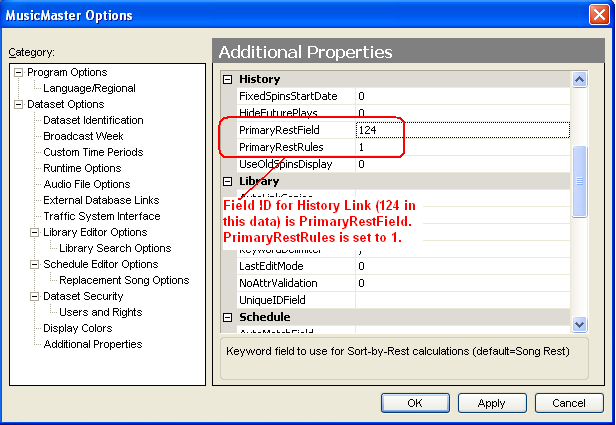 Step Three: Adding the History Link and Dayparting the songs
Step Three: Adding the History Link and Dayparting the songs
Now that you’ve copied the song into its alternate category and set up the Primary Rest Field and Rules, you’ll need to add the History Link to the two copies of the song. This should be the same on all copies that you wish to share a history. As stated earlier, this is commonly the Automation ID for that song.
Once the link is in place on all copies, it’s time to set the Dayparting restrictions on them. For this example, we want the copy in A to play from 6am-6:59pm and the B copy to play from 7pm-5:59am, seven days a week. Double-click in the Dayparting field for the first song and create the restriction. Then repeat the process for each additional song.
Restriction for song in A
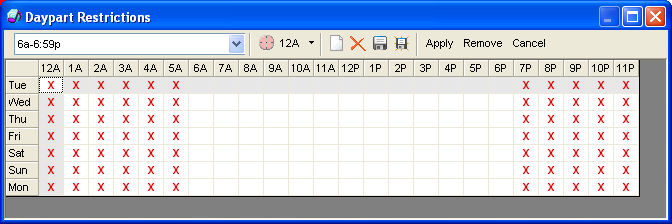
Restriction for song in B
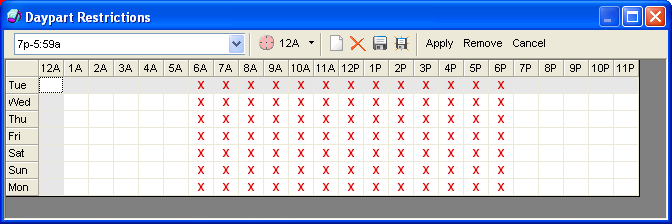
You are now ready to schedule your logs.
Step four: viewing combined histories
After you have scheduled music, open the F6 history graph for one of your linked songs. By default MusicMaster displays all scheduled spins of that song within the active history. But you can use the dropdown at the right of the song line to switch from the Song view to any keyword history, packet history, and even move history. And since the History Link is a keyword field, you can see a combined history of all songs sharing that History Link! Furthermore, you can click the icon to “Highlight plays by the active song” to add boxes to the display for spins of this copy as opposed to other copies of the song.
History graph of song in A
 How long should I keep the copy?
How long should I keep the copy?
That really depends on your situation. Remember, if you delete a song from MusicMaster, its history will disappear. So we would suggest that if you no longer wish to play the copy that you put the song into an unscheduled rest category, while leaving the History Link in place.
Why Use Alternate Categories or History Links?
There are a couple reasons you might use Alternate Categories or History Linking in MusicMaster. One reason—you schedule a song in Heavy during the day, but at night you want it to schedule in Light. A second reason—you have a special show that uses its own music categories, and you want this song to appear in both regular rotation and the special show’s rotation as well. A third reason—you have 2 or more versions of the same song, and you want MusicMaster to treat them equally, so you’d add the same history link to each version. And you may come up with more reasons, too.

